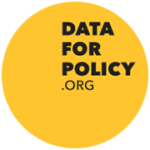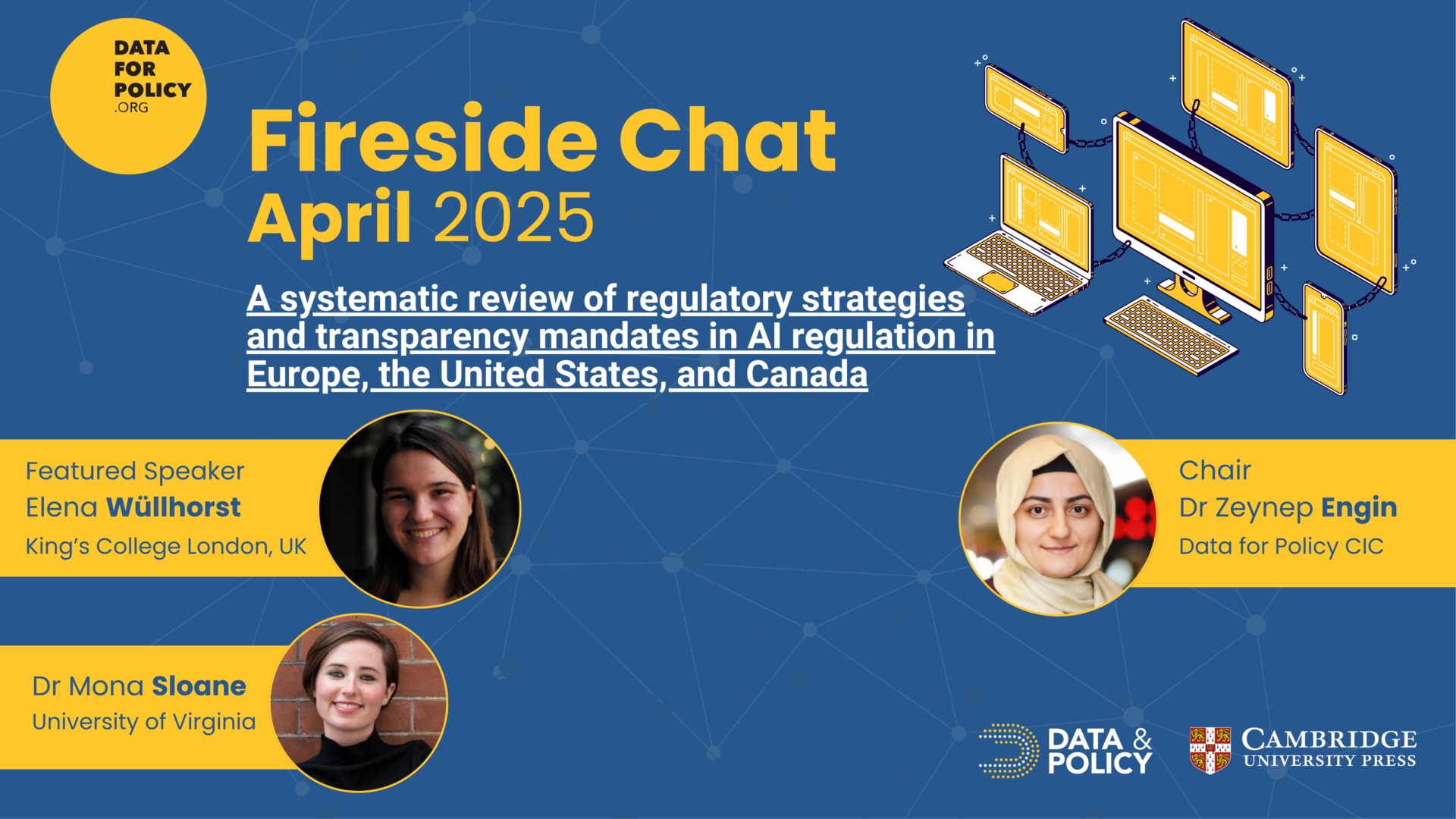Our April 2025 Fireside Chat, chaired by Dr Zeynep Engin, featured a compelling presentation and discussion on AI regulation strategies and transparency mandates across Europe, the United States, and Canada. Elena Wüllhorst presented key findings from their joint research paper—originally presented at the Data for Policy 2024 conference. The session showcased research that bridges the gap between AI policy discourse and applied AI research methods.
Key Insights
The presentation, titled “A Systematic Review of Regulatory Strategies and Transparency Mandates in AI Regulations in Europe, the U.S. and Canada,” was delivered by Elena Wüllhorst (King’s College London) who collaborated with Dr Mona Sloane, Assistant Professor of Data Science and Media Studies at the University of Virginia.
Their research addresses a critical disconnect between two domains: the applied research on fair, accountable, and transparent AI on one side, and the ways in which AI policy discourse frames and treats these same issues on the other. The presentation highlighted how AI regulation has become a geopolitical concern, often described as an “AI race for AI regulation.”
Comprehensive Data Analysis: The researchers collected and analysed 129 AI regulations enacted or proposed between 2016 and 2023 across different levels of government:
- 22% at the local level
- 53% at the state level
- 23% at the national level
- 2% at the transnational level
Notably, nearly 90% of the regulations in their dataset came from the US, with only 8% from Europe. Their analysis revealed interesting geographical patterns within the US, including clusters of local regulations in Massachusetts and the Bay Area.
Regulatory Strategies : The study identified three dominant regulatory strategies:
- Overhauls (42%) – Adapting existing legal frameworks to address AI-specific risks
- Novel AI Regulations (50%) – Creating regulations exclusively focused on AI artifacts or literacy
- Omnibus Regulations (8%) – Comprehensive regulations with large scope, not constrained to specific sectors
The researchers noted that while omnibus regulations were a minority in the sample, they generally affect more people than the other types. In Europe, AI regulation was primarily approached at the EU level rather than through national legislation.
Transparency Mandates: Six categories of transparency mandates were identified in the regulations:
- Human-in-the-loop (8%) – Requirements for human intervention in AI processes
- Red teaming – Novel methods designed to test AI systems’ vulnerabilities
- Assessments (35%) – Techniques to evaluate systemic risks and impacts of AI
- Disclosures – Clear notices about AI system usage
- Audits (16%) – Ex-post assessments comparing how AI systems should behave versus how they actually behave
- Inventories (13%) – Overviews of use cases for specific technologies
The research found that 48 out of the 129 regulations do not assign any transparency mandates, while some require more than one. The most common combination was the requirement of both disclosures and assessments, found in 24 regulations.
Future Directions: During the discussion, participants explored several critical questions:
- How regulatory approaches can cope with the mismatch between the pace of regulation and technological change
- The varying definitions and interpretations of transparency across different regulations
- The effectiveness of sector-specific versus general AI regulations
- Challenges in defining the scope of AI regulations
The researcher emphasised the need to expand their study to include other geographies, particularly looking at regulatory developments in regions like China, India, African countries, and South America. She also highlighted the importance of keeping their dataset updated to track emerging patterns and transparency mandates.
To gain deeper insights from the experts and hear the full discussion on this compelling research, watch the full session here.
What’s Next?
The Fireside Chat series continues next month, bringing together leading experts to explore pressing issues in data governance, AI policy, and emerging technologies. Stay tuned for updates on our upcoming sessions by subscribing to our newsletter.

